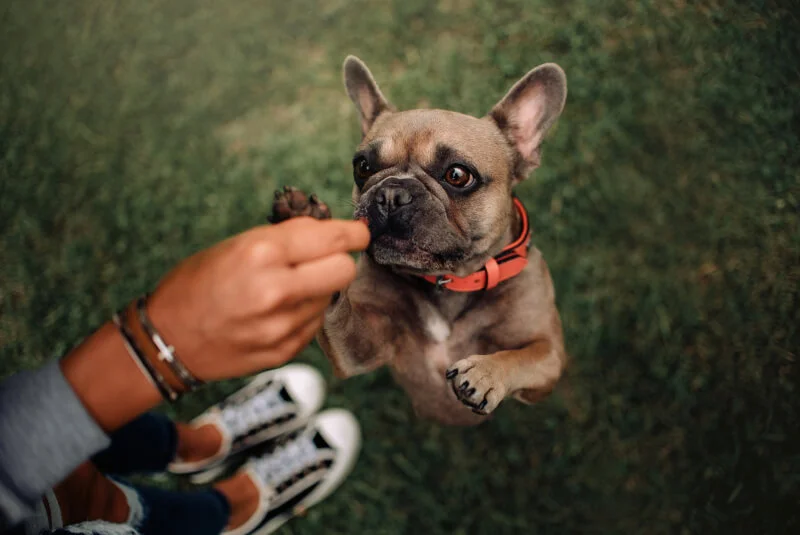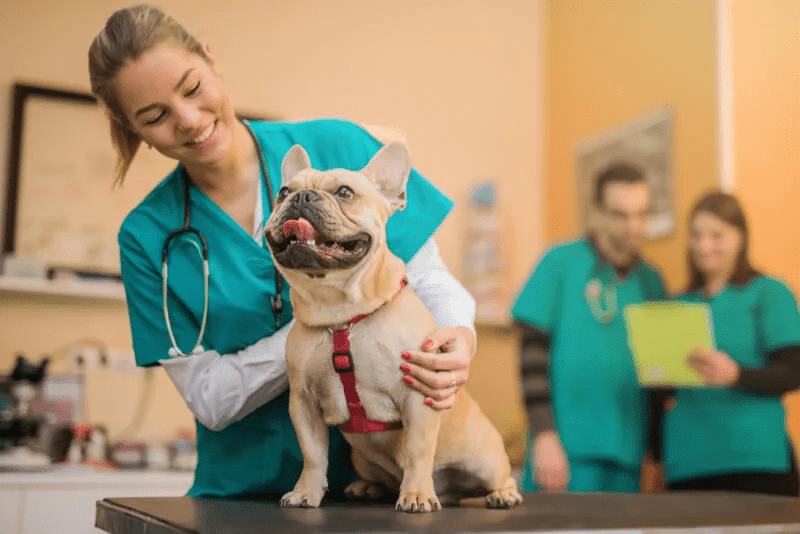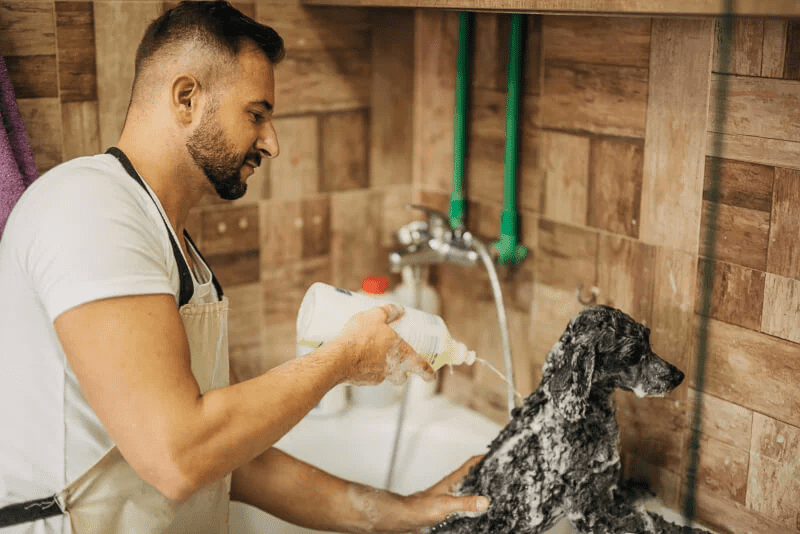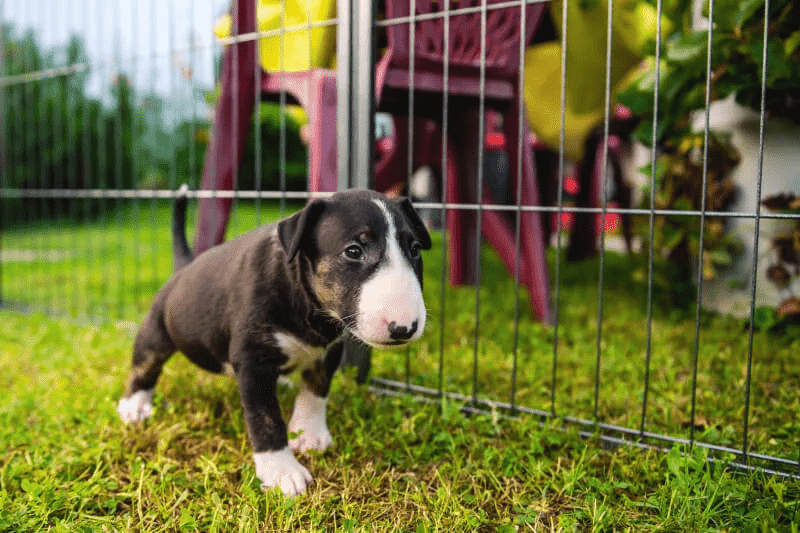
Mouse traps and rat poison are some of the common solutions for addressing mice infestation in our homes. But as much as these tools have proven their efficacy in trapping and killing mice, what does that leave our small pets like dogs? Small dogs are curious animals, especially puppies. They love running around sniffing and inspecting things with their nose and mouth. It no longer comes as a surprise if they, too, get in contact with your mice infestation solutions.
So will small dogs be in trouble for getting in contact with our mice control products? Glue traps shouldn’t cause pet poisoning unless they have consumed some of the glue, but it still poses risks like skin irritations and fur loss. Rat poison, on the other hand, is very detrimental for pets, and may cause conditions leading to death. Call your veterinarian immediately when your pet gets into an accident with your pest control products.
Are Mouse Traps Dangerous to Small Dogs?
Most of the sticky traps today no longer contain strong pesticides dangerous for your pets. However, this doesn’t mean they’re out of danger. If they had ingested some glue from the trap, pet poisoning is still on the table. You need to check the glue’s active ingredient relative to your dog’s age, weight, and medical history.
You need to be careful that your small pets don’t get themselves stuck on the glue board. If you are sure that they had not eaten the glue, your next problem would be the struggle of getting them out. Pest control industries have designed these products to catch mice and rats, which are quick and wiggly. You can expect that glue traps have powerful adhesive.
Mouse poison is highly dangerous for small pets, which is why it’s imperative to rush them to the veterinary clinic immediately. Manufacturers have created rat poison to exterminate rats and mice, some of which may only be slightly smaller than your tiny pets. They also made it smell appetizing for it to lure rodents. Dogs may also become attracted to this smell and eat it.
Risks of Rodent Control Products to Small Dogs

Rat traps and mouse poison are dangerous for small dogs to different degrees. Even sticky traps and snap traps can cause harm to your pets. Here are the risks that we may be looking at once your pet has come into contact with these products:
1) Injury
Small dogs may be active and lively, but they’re fragile because of their build. They may become injured when they get trapped in sticky traps. Small pets may struggle to escape from the glue traps, which may cause strain on their tiny limbs.
Snap traps can also pose risks for small pets. The metal lever may snap on their limbs or snout as they come close to the bait cup.
2) Glue on Fur
Large pets getting trapped on sticky traps may be less serious and less difficult to clean up. However, small pets may not even escape the glue board if they become trapped. Freeing them carelessly may cause fur loss and skin irritations. Yanking off the glue tray may even peel off a part of their skin, too.
3) Nausea
Most brands of glue boards today are non-toxic, odorless, and pet-friendly. However, dogs have a keen sense of smell. Even the slightest whiff of a strong chemical can cause them nausea. You should still observe for signs of nausea, like vomiting, lack of energy, and such.
4) Mouse Bite
Glue traps don’t immediately give you a dead rodent. The trapped house mouse stays stuck and becomes stressed, panicky, and hungry. If your small dog comes near a glue trap with a catch on it, the agitated mouse may bite your dog and cause infections and diseases.
5) Stress
Small dogs may find it frustrating to escape from a glue board, making the situation highly stressful for them. Puppies may experience more stress from this situation because they are new to the process of exploring their surroundings. During this stage, it’s crucial to guide them and make positive associations to socializing and exploring.
Risks of Rat Poison

The risks of rat poison for your small dogs may also differ based on their age and medical history. It becomes more dangerous for senior dogs, puppies, and dogs with weak livers and gastrointestinal health.
1) Internal Bleeding
Some rodent poisons contain long-acting anticoagulants or LAACs that cause internal bleeding. This type of poison does its action by preventing the blood from clotting. It usually takes about 3 to 5 days before you see clinical signs of pet poisoning.
The risks can still differ based on the type of LAAC present in the rat poison. Other active ingredients provide a broader margin of safety. Here are the usual signs of internal bleeding:
- lethargy
- difficulty breathing
- coughing
- intolerance to exercise
- weakness
- pale gums
- vomiting
- swollen joints
- loss of appetite
- bleeding gums
- bruising
- nose bleeding
- diarrhea
- organ damage
2) Organ Damage
Cholecalciferol or vitamin D3 may cause kidney failure as the poison heightens the body’s phosphorus and calcium levels. If you think your pet has ingested poison with this active ingredient, you must act quickly and have your pet treated immediately. Cholecalciferol has a slim margin of safety, and even small amounts can be fatal. Common signs of poisoning from this ingredient are the following:
- lethargy
- Increased urination
- Increased thirst
- loss of appetite
- halitosis
Other active ingredients present in some mouse poisons are aluminum phosphides and zinc. These ingredients release toxic phosphine gas once it reaches your pet’s stomach, so you must not feed your dog after ingesting these ingredients. It may increase poisonous gas in the stomach. You need to be careful and keep yourself and your dog from inhaling more phosphine gas. Improve ventilation and immediately clean up your dog’s vomit while wearing protective gear.
The gas from this poison may cause the following:
- seizures
- abdominal pain
- stomach bloating
- vomiting
- collapse
- shock
- liver damage
3) Brain Swelling
Rat poison with bromethalin as its active ingredient causes brain swelling. This poison disconnects the electron transportation responsible for providing energy to the brain or the oxidative phosphorylation and liver mitochondria. Pets who have ingested this poison have a slim margin of safety, and signs may manifest within 2 to 36 hours. Your veterinarian should monitor them within at least 24 hours after eating the poison. Watch out for the following signs:
- seizures
- tremors
- incoordination or ataxia
What to Do if Your Pet Gets in Contact With Rat Control Products

Most pet owners panic once their pets come into contact with mice control products. That is a normal response to the situation, but it’s also necessary to act quickly and become objective. Here are the things you need to do:
How to Free Your Pet from a Glue Trap:
Pets, especially dogs and puppies, have high chances of getting stuck to your glue trap. Before purchasing a sticky trap, read the label to check any harmful ingredients. Here are things you need to do to free your pet:
1) Use oil to remove glue
Glue residue may be stubborn, but you can remove them using vegetable oil as a solvent. Apply warm oil on your pet, but ensure that it’s not scalding hot. Heat it by hovering it under boiling water. You can use anything slippery, like lard or butter.
2) Avoid strong solvents
Some solvents may be effective in removing glue residue but are not safe for your pets. Avoid paint thinners, mineral spirits, petroleum-based products, and alcohol-based products. These solvents include petroleum jelly, lubricating grease, motor oil, and nail polish remover respectively.
3) Give your pet a bath
Bath your pet in lukewarm water, so their bodies would not be too stressed in regulating the temperature. Use a gentle soap as you wash their fur. Rinse and dry them well.
4) Let your pet rest
Your dog may be panicked and anxious from their experience. Leave your pet to rest in a safe spot after the bath.
5) Go to the veterinary clinic
Observe and look out for symptoms. Have your dog checked at the veterinary clinic to ensure they are out of danger.
How to Save Your Pet from Rat Poison
You must stay calm and quick when dealing with a pet who has ingested mouse poison. Observe the situation and take in necessary information. Here are the things to do:
1) Call the pet poison helpline
Given the situation that you cannot rush your pet to the veterinary immediately, your next steps should be to assess the situation and call the pet poison helpline. They will give you instructions for providing first aid to your pet.
Gather more information about the type of poison that your dog has ingested. Prepare the following information:
- age
- weight
- sex
- breed
- symptoms
- type of poison
- time of incident
- amount of poison ingested and how
It may help to have the package of the rat poison on hand.
The pet poison helpline will then give you instructions for first aid. They may sometimes advise you to induce vomiting, but it’s best to leave this to the experts to avoid further accidents. In instances where it’s safer, keep a 3% hydrogen peroxide.
Don’t induce vomiting if it has already been more than two hours since your dog ate rat poison and they are convulsing, weak, or unconscious.
2) Rush your pet to the veterinary
Getting immediate medical attention for your pet is important in saving them from succumbing to rat poison. Your veterinarian will provide the proper treatment to your dog based on the type of rat poison they ate.
Treatment for LAACs is a month of taking the antidote for the poison, called vitamin K1. Your pet will also undergo a blood clot test called prothrombin (PT) after the treatment.
There is no antidote for cholecalciferol poisoning. Patients usually receive intensive IV fluids and undergo constant laboratory monitoring to keep track of the body’s calcium levels. They will also receive drugs to decrease calcium in the body.
For bromethalin, your pet will receive activated charcoal to decontaminate the body, IV fluids, and drugs to treat the swelling of the brain. Your small dog might be confined at the clinic so the veterinarians can observe your pet round the clock. Poisoning from bromethalin can cause long-term effects.
Poisoning from zinc and aluminum phosphides also need decontamination for the stomach, called gastric lavage. Veterinary experts should perform this procedure because it can be toxic. Your pet will also take antacids to decrease poisonous gas in their stomach.
How to Use Mouse Trap With Pets

Using pest control products may pose many risks for pets, especially small dogs. Some of the best ways to use them in the presence of your pet are installing a dog fence, training your dog, relocating your mouse trap, using bait stations, or considering other mouse traps:
1) Install Dog Fence
Control your dog’s mobility in your home by installing dog fences. These will keep them off the areas that are dangerous for them, such as in the kitchen.
2) Train Dog
Provide your dog with a clear structure in the house. Training your dog will teach them things they should and shouldn’t do. It will also help them know their boundaries in the house.
You can use body blockings to keep your dog away from the area and teach them that those areas are off limits. Praise your pet every time they back away to provide them with a positive association with staying off the kitchen.
3) Relocate Mouse Trap
Avoid putting your mouse trap in places where your dog might play with it. Relocate your mouse trap in places where your dog couldn’t reach. You can slide it under your furniture or in narrow corners.
4) Use Bait Stations
Consider using a bait station to avoid accidents with your pet. These stations will keep your pest control products covered and less accessible for them. Put bait products that are sure to lure mice, like peanut butter, hazelnut spread, and other nutty and sticky food.
5) Consider Other Mouse Trap Alternatives:
No matter how careful we are, it comes no longer as a surprise sometimes that mice may get in contact with small dogs. Mice may also become attracted to our dogs’ pet food. To ensure your pets’ safety, here are other mouse trap alternatives:
- Humane Mouse Traps
Plant humane mouse traps instead of glue or snap traps. No-kill traps can catch your mice while keeping your pet safe. Examples of these types of traps is a bucket trap and the reusable mice trap catch.
- Electrical Traps
Electrical traps will also be safe for your pet. Mice will crawl inside the tunnel, where the sensor will trigger a high voltage of electric current and kill the rodent. The tunnel’s opening will be too small for your dog. If they get inside, the electricity will be painful, not fatal. Using electrical traps is also exterminating mice quickly.
Seek Pet-Friendly Pest Control Services at Midway Pest Management
Using rodent control products requires the utmost care and planning, especially when you have pets around. These products may pose serious risks for them. If you need help with the mice and rat infestation in your home, Midway Pest Management can help you out.
Midway Pest Management has different treatments and strategies to exterminate pests in your home. Your pets will also be safe because we can also use organic products that will not be toxic for them. Schedule a free inspection with us today.
Learn More: Can You Reuse Mouse Traps?